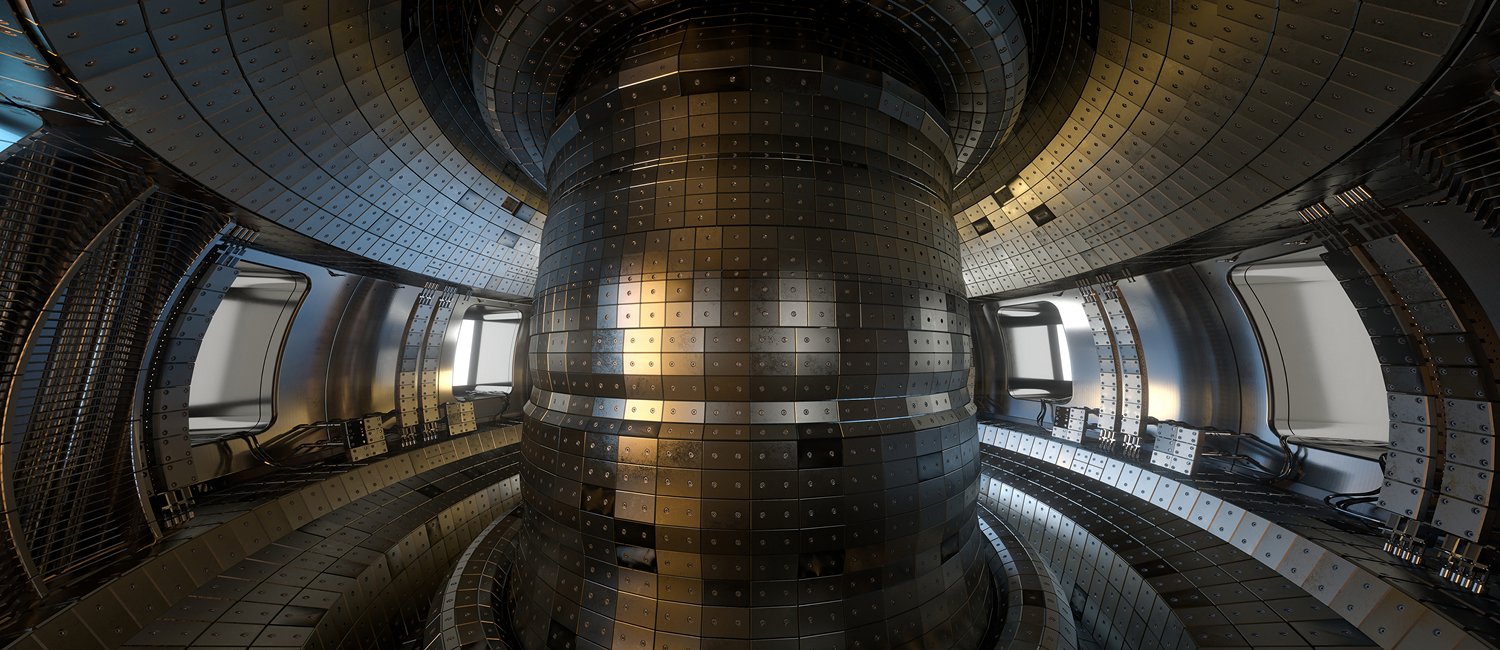Fusion energy is what powers the universe: hydrogen nuclei fusing into slightly larger helium atoms release huge amounts of energy that make the stars shine at night and allows life on Earth, by keeping the Sun lit.
Recreating this process here on Earth has long been the holy grail of the energy world: creating a safe, clean and virtually limitless energy source would be revolutionary to the energy transition and present a radical disruption for the global energy system. According to the International
Atomic Energy Agency (IAEA) fusion could generate around four million times more energy per kilogram of fuel than burning coal – and it produces neither CO2 emissions nor long-lived nuclear waste.
The urgency of the fight against climate change has given new momentum to developing fusion systems that ultimately can deliver emission-free energy to the market.
Today, fusion technology is gaining renewed traction and, thanks to solid scientific progress, new private investments and key European initiatives, we are a step closer to making the energy of the stars on Earth a reality. Eni is proud to be participating in this effort.
The Tokamak
The Sun, as all stars, is a fusion furnace, where light atoms such as hydrogen nuclei come together, forming helium and releasing energy. Extremely high gravitational forces create the pressure in the stars’ centres that enable this fusion process.
On Earth, without these immense gravitational forces, this process is reproduceable thanks to a compromise among high temperatures, gravitational forces and duration of confinement. In particular, extremely high temperatures need to be achieved (over 100 million Celsius) for the fusion reaction to take place. One of the most studied and experimented methods to try and reproduce Sun-like processes is magnetic-confined fusion, which we try to achieve via a Tokamak machine. The Tokamak is a toroidal (doughnut-shaped) chamber surrounded by magnetic coils in which a plasma (an ionised gas, usually composed of a mixture of two isotopes of hydrogen) at very high temperature and low pressure is kept cohesive and away from the inner walls. The field created by these magnets, together with other forces, is also capable of sustaining the plasma.
Magnetic confinement can ensure an intrinsically safe process, due to the controllability of the reaction. Yet, obtaining and maintaining the conditions necessary to recreate the plasma is so difficult that when even only one of the conditions necessary for the fusion reaction is missing, the process extinguishes itself spontaneously.
A truly global innovation
Replicating the Sun is a global innovation challenge, a borderless ambition that brings together the public sector and the industrial and scientific communities. Eni, as an energy technology company, is amongst those who are getting increasingly involved in fusion development and are investing in industrial projects.
ITER is the world’s biggest fusion project – made possible by essential European technologies and universities, research centres and industrial suppliers. Within the past decade, a privately-funded fusion energy industry has also been emerging on the continent. Private projects and European start-ups are working to shorten the timeframe to build a fusion power plant for commercial and industrial use.
Eni participates in the Divertor Tokamak Test facility (DTT), an initiative by Italy’s research centre ENEA, focused on designing and building a Tokamak machine to test components that can withstand the vast amount of heat generated inside the fusion chamber, a project which is part of the EuroFusion programme and roadmap linked to ITER project.
Eni also cooperates with most of the Italian and international leading research centres and the main universities in this field. Eni has made available to researchers its Green Data Centre which, thanks to its great computing power, makes it possible to use highly complex mathematical models to describe for example the physics of plasma and simulate its behaviour.
In the US, Eni is a strategic investor in Commonwealth Fusion Systems (CFS), a spin-out of the Massachusetts Institute of Technology (MIT). The technological partnership between the two companies combines Eni’s engineering and project management experience with a range of ongoing projects to support CFS in the development and deployment of fusion energy on an industrial scale. Eni also collaborates with MIT in the LIFT (Laboratory for Innovation in Fusion Technology) programme to speed up research into solutions concerning materials, superconducting technology, physics and plasma control.
Will the Sun rise in Europe?
Fusion energy can play a key role in meeting Europe’s 2050 climate goals as well as massively contribute to our continent’s energy security.
And yet, the EU risks missing the opportunity to speed-up innovation. Now is the time to engage with all relevant stakeholders in a regulatory and licensing process. A dedicated, clear regulatory framework for fusion technology would encourage innovation and domestic development of a competitive industry. To help this process, the EU should acknowledge that due to their fundamental differences, future fusion energy regulation must be kept separate from that applicable to nuclear fission.
Both the United States and the UK already have a head start: their national regulators are currently putting in place dedicated frameworks for fusion devices separated from fission. Even within the EU a wide number of governments are discussing similar national frameworks and are looking to lead in commercial fusion energy.
Early movers will have a competitive advantage at the vanguard of a new, possible trillion-dollar industry. The EU needs to be one of those early birds – the Sun does not wait for late risers.


